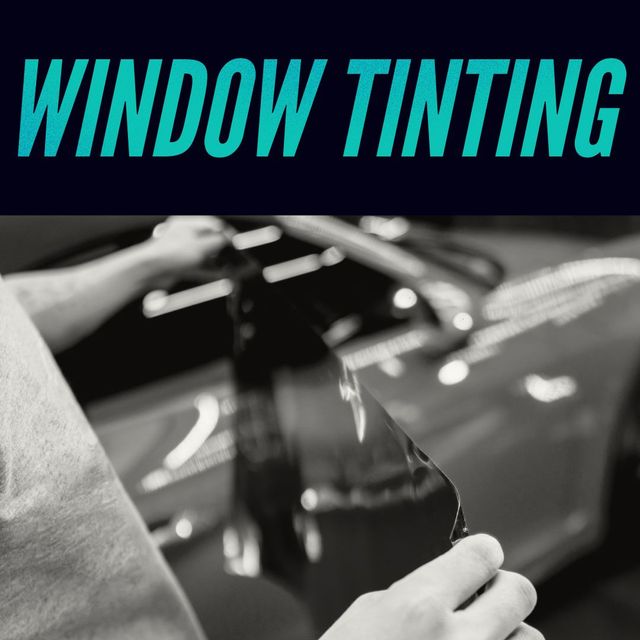Everything You Required to Learn About Vehicle Window Tinting Options
Everything You Required to Learn About Vehicle Window Tinting Options
Blog Article
Home Window Tinting Rules and Guidelines: What You Need to Know Before Tinting Your Cars And Truck
Prior to waging window tinting for your lorry, it is important to acquaint on your own with the varied regulations and standards that govern this practice across various states. These guidelines dictate the permitted levels of tint darkness, commonly measured by visible light transmission (VLT) portions, and include particular stipulations for front windscreens targeted at making sure road security. Furthermore, certain territories might offer medical exceptions for individuals with qualifying problems. Comprehending these complexities can save you from prospective lawful implications, yet what are the certain regulations in your state?
Introduction of Home Window Tinting Rules
Home window tinting regulations are frequently subject to variation across different territories, mirroring neighborhood laws and safety considerations. These regulations determine the permissible levels of color darkness and reflectiveness on car windows, guaranteeing that chauffeurs keep ample visibility while also protecting versus damaging UV rays and warm.
Most laws classify home window tinting based upon the Visible Light Transmission (VLT) percentage, which shows the quantity of light that can travel through the window. Usually, reduced VLT percents indicate darker tints. Regulations often set apart between the front, side, and rear home windows, with more stringent restrictions related to the front windscreen to enhance security for both the vehicle driver and other roadway customers.
In addition, some jurisdictions enforce constraints on the reflectivity of the tint, stopping too much glare that might hinder presence. Exemptions to these legislations might exist for individuals with specific medical problems calling for extra sunlight protection. Conformity with window tinting guidelines is critical, as offenses can result in penalties, required elimination of the color, and potential rises in insurance costs. It is essential for automobile proprietors to familiarize themselves with regional laws before continuing with window tinting installments.
State-by-State Tint Laws
Recognizing the details window tinting regulations in each state is vital for automobile proprietors looking for to abide with the law. Each state in the U.S. has actually developed its very own collection of rules regulating window tinting, which can differ significantly. These policies commonly dictate the permitted levels of tint darkness, the kinds of windows that can be tinted, and any type of clinical exceptions that might use.
For example, states like The golden state have stringent restrictions on tint darkness for front windows, while others, such as New Mexico, may allow darker tints. Furthermore, certain states mandate details presence percents for different windows, consisting of the windscreen, front side windows, and back home windows. It is vital for auto owners to acquaint themselves with their state's regulations to avoid prospective penalties or fines.
In addition, some states might call for a certification sticker label to be put on tinted windows, showing compliance with state legislations. Failure to follow these laws not just runs the risk of legal effects but can likewise impact safety and presence while driving. For that reason, vehicle proprietors ought to carry out thorough research study or consult local authorities to guarantee complete understanding and compliance with state-by-state color policies.
Allowed Tint Kinds and degrees
Lots of automobile owners might be stunned to learn that enabled tint levels and types differ commonly across various states. Each state has developed dig this its very own policies relating to the permitted darkness and reflectivity of window color, frequently measured by Visible Light Transmission (VLT) percentages. VLT describes the quantity of light that can go through the colored windows; hence, a lower percentage suggests a darker tint.

Furthermore, the types of color materials enabled can differ, with some states banning mirror-like or metallic surfaces. It is essential for automobile proprietors to familiarize themselves with their state's specific regulations to make sure compliance. Non-compliance can cause penalties, mandatory removal of the tint, or other legal consequences, making it critical to recognize these policies prior to waging setup.
Medical Exceptions for Tinting
While not all states supply allocations for medical exemptions regarding window tinting, those that do recognize the requirement for specific people to enhance presence and comfort due to medical problems. Various clinical problems, such as lupus, skin cancer cells, and certain eye problems, can render people especially conscious sunshine. Subsequently, these people might require darker colors to shield themselves from unsafe UV rays and glare.

It is crucial to note that despite a clinical exception, there might still be constraints on the degree of tint allowed. Conformity with state laws makes certain that individuals are both secured and within legal restrictions. Those taking into consideration medical exceptions need to call their regional Department of Electric motor Automobiles or equivalent authority to comprehend the needs and procedures required to get an exemption successfully.
Charges for Non-Compliance
Stopping working to abide with home window tinting legislations can cause considerable fines, which vary by state. Law enforcement firms are encouraged to provide citations for vehicles that do not adhere to the specified tinting laws. These charges generally consist of fines, which can range from moderate quantities to numerous hundred bucks, relying on the extent of the offense and the state concerned.
In some territories, duplicated offenses might lead to escalating penalties or additional charges, such as compulsory court looks. Non-compliance may necessitate the removal of unlawful tinting, commonly at the owner's cost. In severe cases, habitual wrongdoers may deal with suspension of their vehicle registration till conformity is achieved.
Additionally, insurance policy ramifications may occur from obtaining multiple citations for home window tint violations. Insurance providers might watch such violations as a sign of riskier behavior, potentially bring about increased costs or problem in insurance coverage.
To prevent these charges, it is essential for car owners to familiarize themselves with their local window tinting laws and make certain that their lorry complies (Window Tinting). This positive technique not only prevents lawful implications however additionally advertises road safety
Verdict

A lot of regulations identify window tinting based on the Visible Light Transmission (VLT) percentage, which shows the amount of light that can pass with the home window. Compliance with window tinting regulations is vital, as violations can result in penalties, required elimination of the tint, and potential boosts in insurance coverage premiums.Recognizing the specific window tinting regulations in each state is vital for automobile proprietors looking for to abide with the regulation. These laws frequently dictate the permitted degrees of color darkness, the kinds of windows that can be tinted, and any type of clinical exemptions that may use.
For instance, states like California have rigid constraints on tint darkness for front windows, while others, such as New Mexico, might enable darker colors.
Report this page